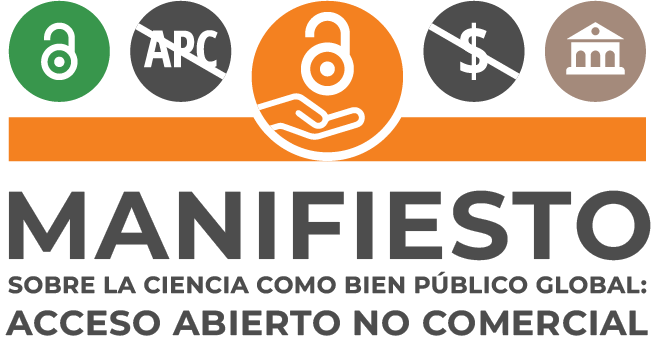PROTECTION OF THE INTELLECTUAL PROPERTY OF TRADITIONAL MEDICINE OF INDIGENOUS PEOPLES: SPECIAL REFERENCE TO THE PERUVIAN CASE
DOI:
https://doi.org/10.30827/modulema.v5i0.20942Keywords:
indigenous people, traditional medicine, intellectual property, genetic resourcesAbstract
Indigenous peoples, in their territories, have harbored a great variety of wealth, not only material, but also intellectual, developing and conserving knowledge for centuries that have allowed them to survive and overcome critical contexts such as health. Within this intellectual property we find the knowledge of traditional medicine, whose legal protection is associated with the genetic resources from which they come. In this context, events in which large industries have accessed this knowledge and have patented it as their own, thus depriving its original collective authors, has motivated efforts from the international community and from the States to regulate and articulate protection networks and mechanisms. Along these lines, this article seeks to address this situation by conceptually developing the regulation regarding intellectual property, its protection, the object, scope and manifestations thereof by indigenous peoples and the role that WIPO has played for its preservation. Likewise, the additional efforts that have been made by the international community in order to enhance its protection and the challenges of scientific progress and the not always effective regulatory regulation will be identified.
Downloads
References
Arbaza, J. y Katz, J. (2002). Los derechos de propiedad intelectual en el mundo de la OMC. CEPAL. https://repositorio.cepal.org/bitstream/handle/11362/4504/1/S01121080_es.pdf
Cobos Mora, F.; Hasang Moran, E.; Lombeida García, E. & Medina Litardo, R. (2020). Importancia de los conocimientos tradicionales, recursos genéticos y derechos de propiedad intelectual. Journal of science and research, 5(CININGEC), 60-78. https://revistas.utb.edu.ec/index.php/sr/article/view/998/698
Conde, C. A. (2012). Consecuencias de la biología sintética en los derechos de propiedad intelectual y acceso a los recursos genéticos y distribución de los beneficios. Revista la Propiedad Inmaterial, 16, 281-295. https://revistas.uexternado.edu.co/index.php/propin/article/view/3272/2921
Correa C. (2001). Los conocimientos tradicionales y la propiedad intelectual. Oficina Cuáquera ante las Naciones Unidas.
Espinoza, M. F. (2004). Recursos genéticos, conocimientos tradicionales y propiedad intelectual: piezas claves en los TLC. Íconos, 19, 13-20. https://doi.org/10.17141/iconos.19.2004.44
García Fuente, P. (2015). La regulación internacional del acceso a los recursos genéticos y conocimientos tradicionales de las comunidades indígenas. Revista Jurídica de la Universidad Autónoma de Madrid, 32, 155-184. https://revistas.uam.es/revistajuridica/article/view/6439/8030
Ministerio de Asuntos Exteriores, Unión Europea y Cooperación del gobierno de España, s./f. OMPI: Organización Mundial de la Propiedad Intelectual. http://www.exteriores.gob.es/RepresentacionesPermanentes/OficinadelasNacionesUnidas/es/quees2/Paginas/Organismos%20Especializados/OMPI.aspx
Nemogá Soto, G. R. (2001). Régimen de propiedad sobre recursos genéticos y conocimiento tradicional. Revista Colombiana de Biotecnología, 3(1), 17-35. https://revistas.unal.edu.co/index.php/biotecnologia/article/view/30060/30258
Organización Mundial de la Propiedad Intelectual [OMPI]. (s.f.a). Folleto N° 12: La OMPI y los pueblos indígenas. https://www.ohchr.org/Documents/Publications/GuideIPleaflet12sp.pdf
Organización Mundial de la Propiedad Intelectual [OMPI]. (s.f.b). Reseña del Convenio que establece la Organización Mundial de la Propiedad Intelectual (Convenio de la OMPI) (1967). https://www.wipo.int/treaties/es/convention/summary_wipo_convention.html
Organización Mundial de la Propiedad Intelectual. (2004). Información general. http://documentostics.com/documentos/informacion_OMPI.pdf
Organización Mundial de la Propiedad Intelectual. (2014). Glosario de los términos más importantes relacionados con la propiedad intelectual y los recursos genéticos, los conocimientos tradicionales y las expresiones culturales tradicionales. https://www.wipo.int/edocs/mdocs/tk/es/wipo_grtkf_ic_28/wipo_grtkf_ic_28_inf_7.pdf
Organización Mundial de la Propiedad Intelectual. (2015). Propiedad intelectual y recursos genéticos, conocimientos tradicionales y expresiones culturales tradicionales. https://www.wipo.int/edocs/pubdocs/es/wipo_pub_933_2020.pdf
Organización Mundial de la Propiedad Intelectual. (2016a). Reseña 1: Conocimientos tradicionales y propiedad intelectual. https://www.wipo.int/publications/es/details.jsp?id=3858
Organización Mundial de la Propiedad Intelectual (2016b). Reseña 2: Comité Intergubernamental de la OMPI sobre Propiedad Intelectual y Recursos Genéticos, Conocimientos Tradicionales y Folclore. https://www.wipo.int/publications/es/details.jsp?id=3861&plang=ES
Organización Mundial de la Propiedad Intelectual. (2016c). Reseña 6: La propiedad Intelectual y los conocimientos médicos tradicionales. https://www.wipo.int/publications/es/details.jsp?id=3871&plang=ES
Organización Mundial de la Propiedad Intelectual. (2016d). Reseña 9: Catalogación de los conocimientos tradicionales y las expresiones culturales tradicionales. https://www.wipo.int/edocs/pubdocs/es/wipo_pub_tk_9.pdf
Regino Montes, A. (2015). Propiedad intelectual colectiva de los pueblos indígenas. La Jornada sin fronteras. Política. https://www.jornada.com.mx/2015/11/28/politica/015a1pol.
Ruiz Muller, M. (2008). La biodiversidad como objeto de protección jurídica: los recursos genéticos, la propiedad intelectual y los conocimientos tradicionales. Themis, 56, pp. 109-125. http://revistas.pucp.edu.pe/index.php/themis/article/view/9180/9588
Sukhwani, A. (2012). La protección de los conocimientos tradicionales y de los recursos genéticos en la OMPI y en el CDB. Revista sobre Patrimonio Cultural: Regulación, Propiedad Intelectual e Industrial, 1, 1-28. https://www.eumed.net/rev/riipac/01/recursos-geneticos-OMPI-CDB.pdf
Ticona Núñez, J. L. (2018). Crónica de la Ley 27811: 16 años después, aciertos y desafíos en la protección de los conocimientos tradicionales de los pueblos indígenas asociados a la diversidad biológica. Persona y Familia: Revista del Instituto de la Familia, 1(7), 209-223. https://revistas.unife.edu.pe/index.php/personayfamilia/article/view/1258/1205
Zolla, C. (2005). La medicina tradicional indígena en el México actual. Arqueología Mexicana, XIII(74), 62-65.


















